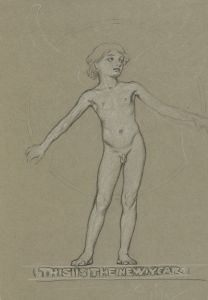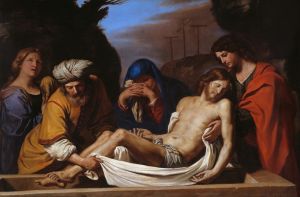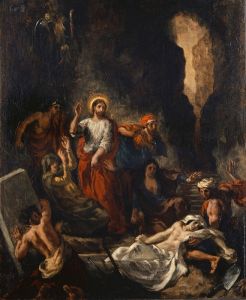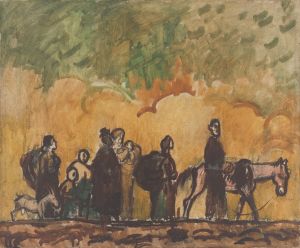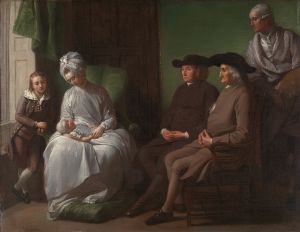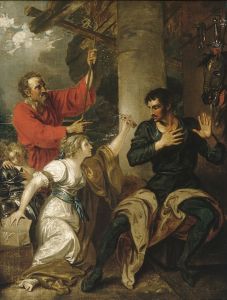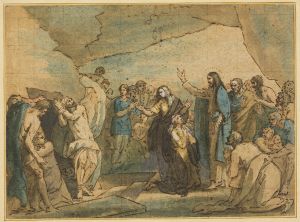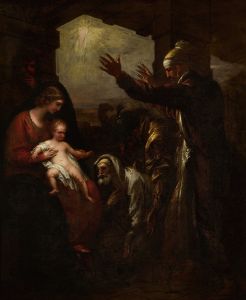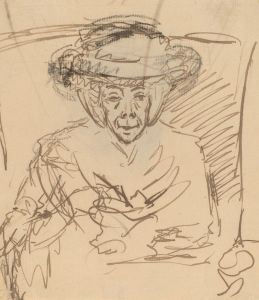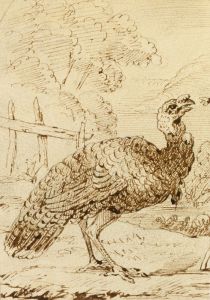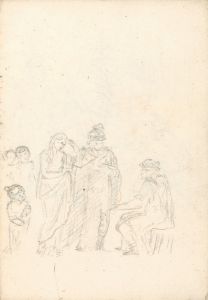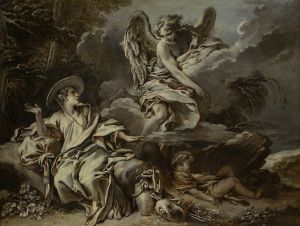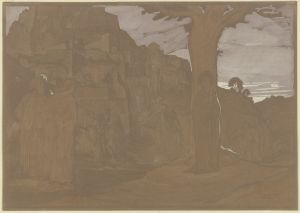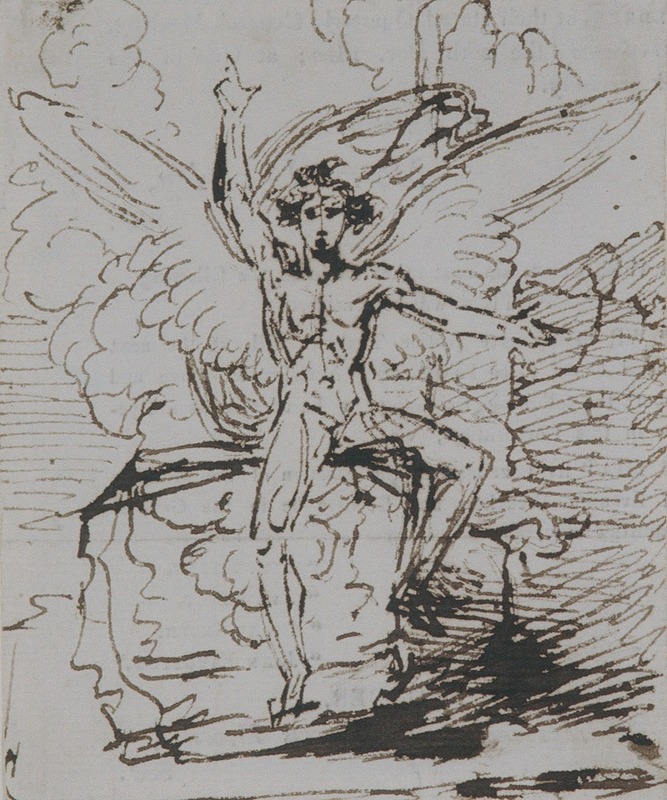
The Angel at the Tomb of Christ
A hand-painted replica of Benjamin West’s masterpiece The Angel at the Tomb of Christ, meticulously crafted by professional artists to capture the true essence of the original. Each piece is created with museum-quality canvas and rare mineral pigments, carefully painted by experienced artists with delicate brushstrokes and rich, layered colors to perfectly recreate the texture of the original artwork. Unlike machine-printed reproductions, this hand-painted version brings the painting to life, infused with the artist’s emotions and skill in every stroke. Whether for personal collection or home decoration, it instantly elevates the artistic atmosphere of any space.
"The Angel at the Tomb of Christ" is a painting by the renowned American artist Benjamin West, who was active during the late 18th and early 19th centuries. West is often celebrated for his historical and religious paintings, and he played a significant role in the development of American art, despite spending much of his career in England.
Benjamin West was born in 1738 in Springfield, Pennsylvania, and he demonstrated an early talent for art. He traveled to Europe in 1760, where he studied the works of the Old Masters and developed his neoclassical style. West eventually settled in London, where he became a prominent figure in the art community and served as the second president of the Royal Academy.
"The Angel at the Tomb of Christ" is one of West's religious-themed works, a genre he frequently explored throughout his career. The painting depicts a scene from the New Testament, specifically the moment after Christ's resurrection when an angel appears at his tomb. This event is described in the Gospels, where the angel informs the women visiting the tomb that Jesus has risen from the dead.
West's interpretation of this biblical scene is characterized by his use of dramatic lighting and composition, which were hallmarks of his style. The angel is typically portrayed with a serene and majestic presence, often bathed in a divine light that contrasts with the darker tones of the tomb. This use of chiaroscuro—an artistic technique that employs stark contrasts between light and dark—enhances the spiritual and dramatic impact of the scene.
West's religious paintings, including "The Angel at the Tomb of Christ," were well-received in his time, as they aligned with the tastes and interests of both his patrons and the broader public. His works often combined elements of neoclassicism with a sense of emotional depth and realism, which appealed to contemporary audiences.
In addition to his artistic achievements, Benjamin West was an influential teacher and mentor to many artists of his time. His role as president of the Royal Academy allowed him to shape the direction of British art and support the careers of numerous young artists. West's legacy is evident in the works of his students and the continued appreciation of his paintings.
While specific details about the provenance or current location of "The Angel at the Tomb of Christ" may not be widely documented, West's contributions to religious art remain significant. His ability to convey spiritual themes with both grandeur and subtlety has ensured his place in art history as a pivotal figure in the transition from the Baroque to the neoclassical style.
Overall, Benjamin West's "The Angel at the Tomb of Christ" exemplifies his skill in rendering religious narratives with both technical proficiency and emotional resonance, reflecting his status as a leading artist of his era.





